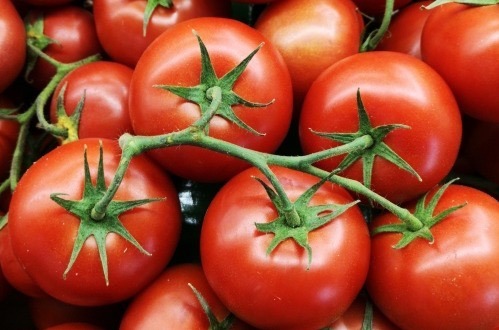
In W27 in the tomato landscape, the World Processing Tomato Council (WPTC) released a tomato production update in the Northern Hemisphere, revealing mixed updates and concerns across countries. Egypt's peak summer season is in full swing, with processing at full capacity and positive reports on quality and yield. France has experienced improved weather conditions, but late blight and bacteriosis remain challenges due to frequent rains. The forecast for France has been revised to around 150 thousand metric tons (mt), with harvest expected in late Jul-23 in the southeast and early Aug-23 in the southwest. In Italy, weather conditions have been favorable, with some planting delays experienced in the South. Portugal, but concerns remain about high humidity creating conditions for mildew. Spain faces similar weather conditions to Portugal, with high temperatures potentially impacting flowering. The tomato harvest is expected to start around July 10 to 25 and slightly earlier in Andalusia. The tomato production forecast remains unchanged from the June crop update of 42.5 million metric tons (mmt), despite some market sources claiming this volume is unattainable.
The region of Sicily in Italy, with 9 thousand hectares of greenhouses and tunnels, has a significant horticultural production, with over 50% dedicated to table tomatoes. The Grand Gala awarded four special prizes to the best varieties, including Santy Yellow F1 and Rivaldo F1 varieties. The region's socio-economic aspects are recognized, with Southern Seeds winning the ‘Award to a Sicilian Seed Company.’ Furthermore, NRGene and Philoseed companies are working on a high-resistance trait for tomato resistance against tomato brown rugose fruit virus (ToBRFV), with early adopters in Europe and the United States observing high levels of virus resistance. The DNA markers based on PCR technology demonstrate a strong association with the resistance trait, making them highly suitable for creating tomato varieties with resistance. The implementation phase of this project is estimated to require approximately 18 months.
Nigeria's National Bureau of Statistics (NBS) reports an average price increase of 17.68% YoY for 1 kg of tomatoes, increasing from USD 0.53 (NGN 423.48) in May 2022 to USD 0.62 (NGN 498.34) in May 2023. MoM 1 kg of tomato increased by 2.73% in May from the USD 0.61 (NGN 485.10) recorded in April 2023. The highest average price of 1 kg of tomato was recorded in Edo at USD 1.20 (NGN 957.95), while the lowest was in Kogi at USD 0.27 (NGN 215.43). Meanwhile, India's high retail tomato prices are due to inadequate production, delayed monsoon, and extreme heat, impacting supply and affordability. Pest attacks and disruptions further exacerbate the situation. The average all-India retail price of tomatoes is USD 1.01 (IDR 83.29), with a modal price of USD 1.22 (IDR 100). The Indian government anticipates cooling tomato prices in August and again at the beginning of November. Lastly, Seoul National University (SNU) researchers used CRISPR gene editing to produce tomato fruits with increased levels of provitamin D3 (ProVitD3). This is crucial for reducing circulating vitamin D deficiency, as natural sources are limited. The study highlights the potential of tomato fruits as a natural vitamin D source.





